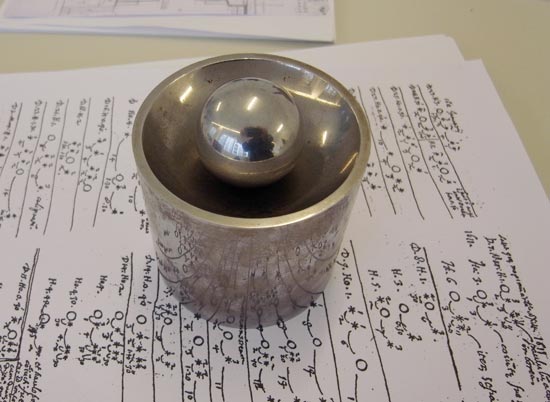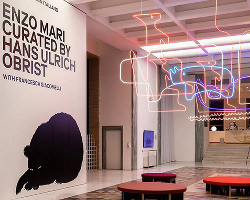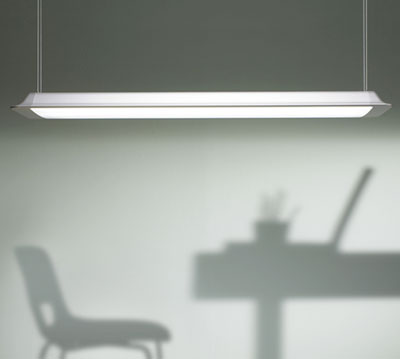the intellectual work
exhibition curated by barbara casavecchia
kaleidoscope project space
april 13 – 30, 2010
everyone collects something. it is official now – enzo mari collects paperweights. they serve as anchors in the ocean of sketches. preventing the flow of ideas from being blown away.
a few times he bought pieces, but it hardly ever happened. usually walking in the streets or wandering in factories he finds them. designboom’s editor in chief (birgit lohmann) studied industrial design under his mentorship and later collaborated over many years with mari. during their frequent travels, he picked up little heavy things which he saw as having an extraordinary inner quality. these very common objects to him are formally perfect samples of our reality. over the years he gathered them in various places, identifying them especially among the rejected industrial products, and then restoring their essential requisites as objects: function and beauty.

a view into ‘the intellectual work’ exhibition
image © designboom

a view into the exhibition
image © designboom
each of the paperweights has a story and a date. they’re ponderous, from one hectogram to four kilos. in his milan office, there are lots of piles of notepads and loose sheets of paper placed on tables, shelves, methodically overflowing onto the floor… sometimes only a short phrase of four or five words is written on a single sheet – variations of a theme. all of them are kept together, juxtaposed on the same surface by a different paperweight.

doorknocker from the front door of enzo mari’s office, 1980s, milan
image © designboom
to mari the paperweights are not a simple collection of mirabilia, nor they are divértissement. mari has always investigated the role of the intellectual, the cooperation of thinking and doing, heads and hands. words and things. in fact the title of this exhibition which features his collection is ‘intellectual work’. the expression ‘intellectual work’ refers to the marxian-engelsian opposition of ‘kopfarbeit’ and ‘handarbeit’ (intellectual and manual labor) as well as to the 1918 esay of the same title by max weber.

leg of flamingo sculpture, completed with an old drawer knob, 1970s anacapri, naples, italy
image © designboom
analysis is an irrepressible instinct for mari. to any question one might ask him, he replies with a problem. he systematizes, divides, draws up diagrams, calculates modules. he seeks out a solution and verifies it. discarding, cutting. starting over. an exercise, the criticism of variations. the paperweights are rather thinking tools.

inox steel sheet , sample by CMF in cinisello balsamo, milan, gift by birgit lohmann
and fragment of the ‘pigna’ bowl designed by enzo mari for daum
image © designboom
‘I became very interested in the paradigm of science, where you affirm something and want to prove it, and your only chance is to provide your listeners with the tools of your research so that they can verify your hypothesis.’ – enzo mari

a view on one of the tables in the exhibition
image © designboom
in half a century, mari worked on ca. 2000 projects, but the realized ones are just a 1000 odd. ‘in the field of artistic expression – where art, being open to the infinite, is on the top level – what is lacking is the paradigmatic elements that you need in order to communicate your message to other people. I think the paradigm, the general reference of culture and the source for the theoretical framework that defines creativity, has to be the masterpiece. the possibilities expressed by the most brilliant minds are at the very core of my self-education.’ – enzo mari

paperweight designed by enzo mari for danese, end of 1980s, milan, italy
image © designboom

bulb, 2000s, milan, italy, gift by francesco faccin
image © designboom
‘answers are always manifold and need to be meticulously verified. I have attempted to verify them all. and still, verification doesn’t put an end to further questions.’ – enzo mari

olivetti multiple, 1960s ivrea, italy, gift by giorgio soavi
image © designboom
mari refers to lévi-strauss in his ‘the savage mind’: ‘he who executes a work with his own hands, using different means from those used by the professional,’ namely the engineer, the symbol of scientific thought. ‘the ‘bricoleur’ is adept at performing a large number of diverse tasks; but, unlike the engineer, he does not subordinate each of them to the availability of raw materials and tools conceived and procured for the purpose of the project. his universe of instruments is closed and the rules of his game are always to make do with ‘whatever is at hand’, that is to say with a set of tools and materials which is always finite and is also heterogeneous because what it contains bears no relation to the current project, or indeed to any particular project, but is the contingent result of all the occasions there have been to renew or enrich the stock or to maintain it with the remains of previous constructions and destructions. the set of the ‘bricoleur’s’ means cannot therefore be defined in terms of a project (which would presuppose besides, that, as in the case of the engineer, there were, at least in theory, as many sets of tools and materials or ‘instrumental sets’, as there are different kinds of projects). it is to be defined only by its potential use or, putting this another way and in the language of the ‘bricoleur’ himself, because the elements are collected or retained on the principle that ‘they may always come in handy’.

a view of the exhibition
image © designboom
but there is more. granting the papers months and years to mature, to form geological layers of meditation, also means escaping the oppressive mechanisms of the productive system, the compulsive logic of efficiency at all costs. it means affording oneself the subversive luxury of taking all the required time to develop a good project. it means extending the range of research in order to get an overall picture, acting against the increasing hyper-specialization that restrains creative expression nowadays.

a view on one of the tables in the exhibition
image © designboom
in order to get these existing objects to function properly as paperweights, mari makes only the slightest changes, and in doing so, he suggests a positive alternative to what he calls ‘ the current flood of art pompier and hebephrenic creativity’ in contemporary design.

a view on one of the tables in the exhibition
image © designboom
mari’s piles of sheets, his unfinished projects and his obsession for the unachievable, imperfectible final version. perhaps the paperweights and the notes are ultimately talismans, there to exercise the risk of being complacent and giving up the search.

counterbalance of achille castiglioni’s ‘parentesi’ floor lamp, 1990s milan, italy, gift of a technician
image © designboom
‘I could affirm that the intellectual work lies in saying NO. negation is addressed not only to others, but also to your own goal, because the final aim is getting to the essence.’ – enzo mari on a blackboard in mari’s office he wrote, time ago, ‘I must not speak in vein.’

KPM – koenigliche porzellan manufaktur, mid-1990s, berlin, germany, gift by birgit lohmann
image © designboom
collections are infectious — the paperweight collection was shared by mari’s friends and collaborators. this handle is a gift from birgit to mari. she dismantled it from an old mechanical lathe, during their collaboration and artistic direction of KPM, the german manufacture of porcelain in berlin, from 1993 to 1998.

water tap fixed to an iron pulley, 1960s, milan, italy
terracotta and concrete brick, 2008, milan italy
image © designboom
the objets trouvés paperweights correspond perfectly with mari’s poetics, his non-stop search for the essence of form. not in theory, but in practice.

pair of ‘boccia’, beginning of the 2000s, mariano commense, italy, gift by alessandro marelli
image © designboom
perhaps the paperweights and the notes are ultimately talismans, there to exorcise the risk of being complacent and giving up the search.

a view into the exhibition
image © designboom
consistently the group of paperweights places on the table looks like a miniaturized sculpture park. a catalogue of the exhibition is available via the publishers kaleidoscope.
enzo mari (20)
milan design week 2010 (203)
PRODUCT LIBRARY
a diverse digital database that acts as a valuable guide in gaining insight and information about a product directly from the manufacturer, and serves as a rich reference point in developing a project or scheme.













